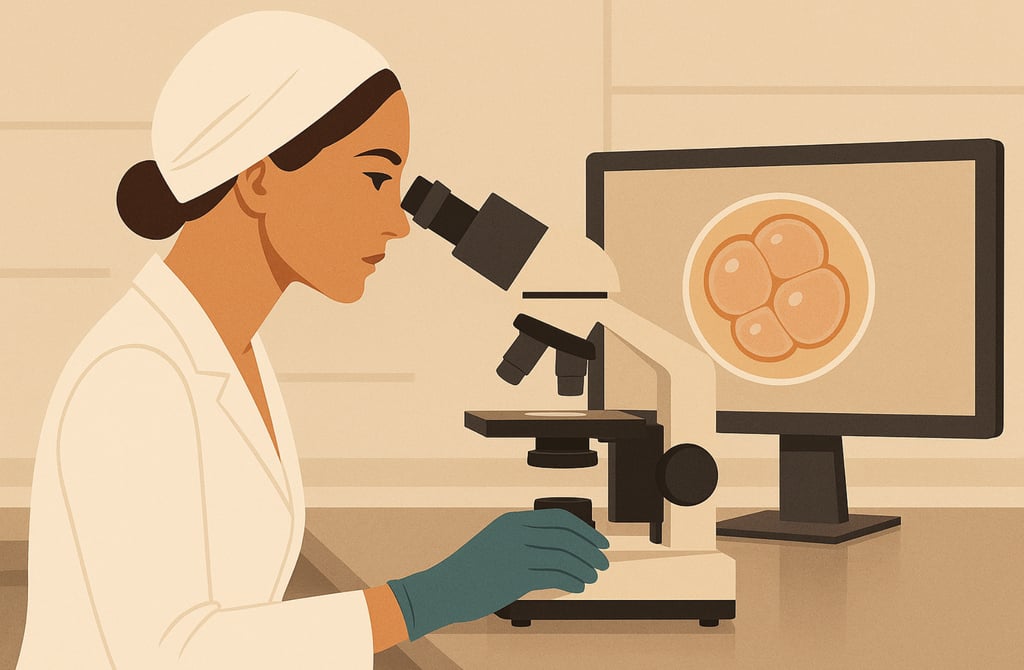Embryo Creation in the Lab
Learn how embryos are created in the lab, from ICSI vs conventional IVF to fertilisation rates and the stages of early embryo development.
THE IVF PROCESS STEP BY STEP
8/9/20252 min read


When you hand over your eggs and sperm to the embryology team, a quiet transformation begins - one that takes place in a sealed, temperature controlled laboratory rather than in the body. Here’s what happens behind those closed doors, and why each step matters.
Step 1: Preparing the Eggs and Sperm
Once eggs are collected during egg retrieval, they’re placed in a nutrient-rich culture medium, kept at body temperature.
Sperm preparation involves washing and separating the healthiest, most mobile sperm from the rest.
Timing is key - eggs and sperm must meet under the right conditions for the best chance of fertilisation.
Step 2: ICSI vs Conventional IVF
Conventional IVF
Eggs and sperm are placed together in a dish.
Fertilisation happens when a sperm naturally penetrates the egg.
Often used when sperm count and motility are normal.
ICSI (Intracytoplasmic Sperm Injection)
A single sperm is injected directly into the egg using a fine needle.
Often used in cases of male factor infertility, previous failed fertilisation, or when using frozen eggs.
Step 3: Fertilisation and Day 1 Check
Around 16–20 hours later, embryologists check for two pronuclei - the markers of successful fertilisation. Not all eggs will fertilise, and that’s normal.
Fertilisation rates can vary depending on age, egg and sperm quality, and method used.
A healthy fertilisation rate for conventional IVF is often around 60–70% of mature eggs; for ICSI, it can be slightly higher.
Step 4: Early Embryo Development
Day 2–3: The fertilised egg (now called an embryo) divides into multiple cells. Embryologists assess cell number, size, and symmetry.
Day 5–6: The embryo may reach the blastocyst stage, with over 100 cells and a fluid-filled cavity. This stage offers higher implantation potential.
Embryos are graded for quality, but grading isn’t an absolute prediction - lower-grade embryos can and do lead to healthy pregnancies.
Step 5: Deciding What’s Next
If transferring fresh, the highest-quality embryo(s) will be selected for transfer.
Remaining healthy embryos may be frozen (vitrified) for future use.
The Human Side of Lab Work
While the process is highly technical, embryologists know each embryo represents real hope. Many clinics allow updates during this stage, but not every day - because constant handling can stress the embryos. Trusting the process (and the people) is essential.
© 2025. All rights reserved.
